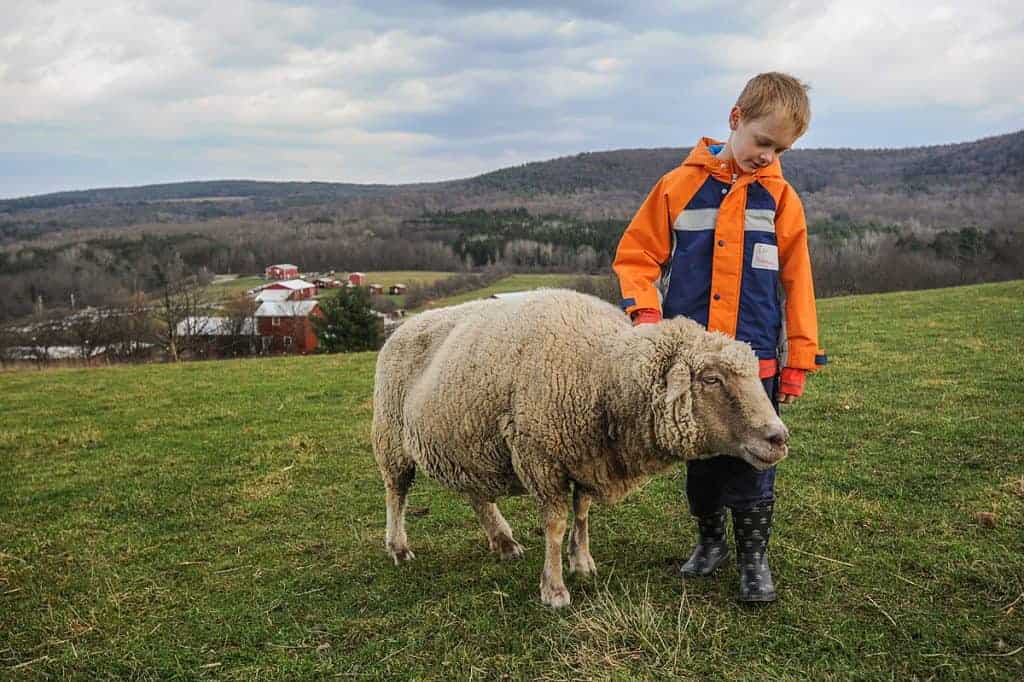
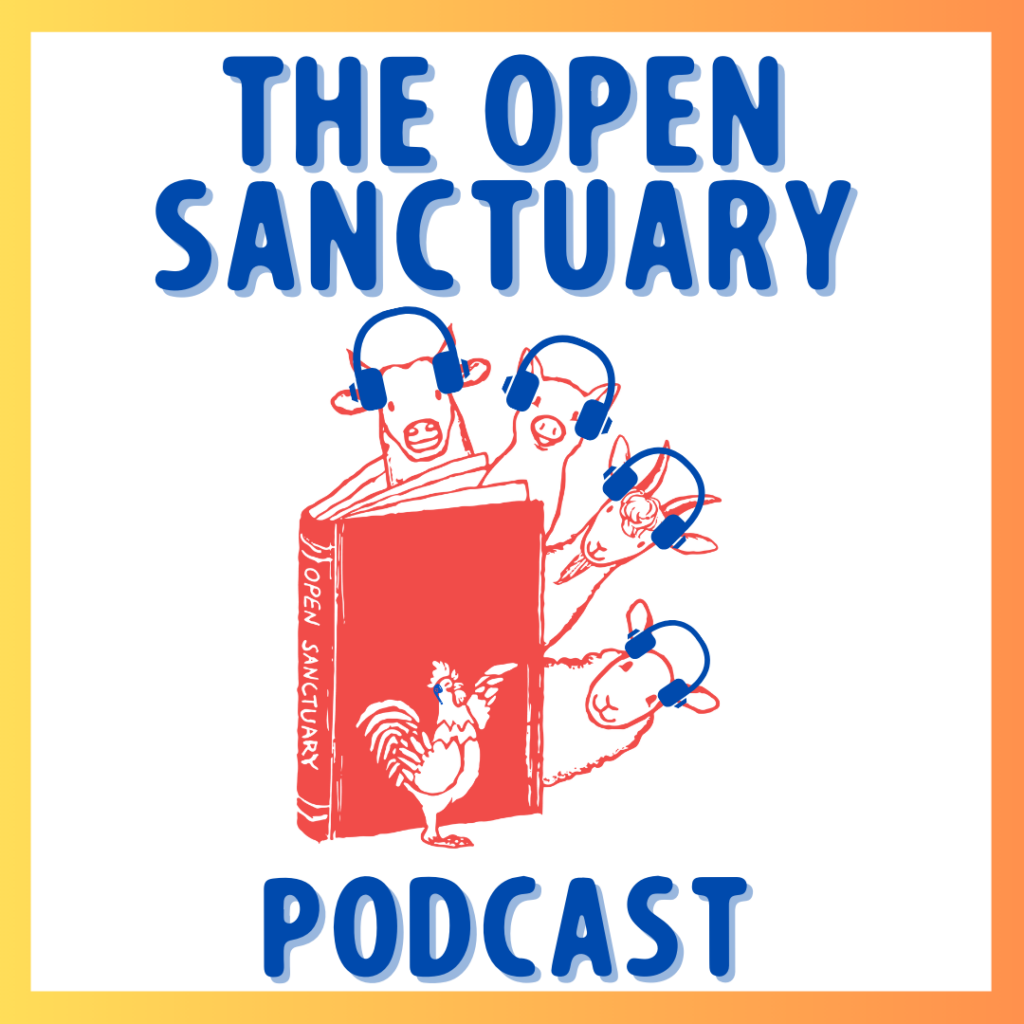
We Have A Podcast Episode On This Subject!
Want to learn about this topic in a different format? Check out our episode of The Open Sanctuary Podcast about communicating with youth about animal exploitation here.
Introduction
The idea of unpacking animal exploitationExploitation is characterized by the abuse of a position of physical, psychological, emotional, social, or economic vulnerability to obtain agreement from someone (e.g., humans and nonhuman animals) or something (e.g, land and water) that is unable to reasonably refuse an offer or demand. It is also characterized by excessive self gain at the expense of something or someone else’s labor, well-being, and/or existence. with youth might seem daunting, especially since most children and adults don’t have much experience with this subject. But if we want younger generations to imagine and help create a world that is free from animal exploitation, it’s essential that we engage them in anti-speciesist thinking and challenge their human-centered behaviors towards animals as early as possible. So, how can animal sanctuaries help create safe space for discussing this tough topic with youth in a way that conveys a sense of moral urgency but not a sense of hopelessness? To help sanctuaries feel more confident in their ability to engage with children, this resource provides knowledge, tips, and tools specifically intended to make discussion around animal exploitation suitable for youth.
Developmentally Appropriate Dialogue
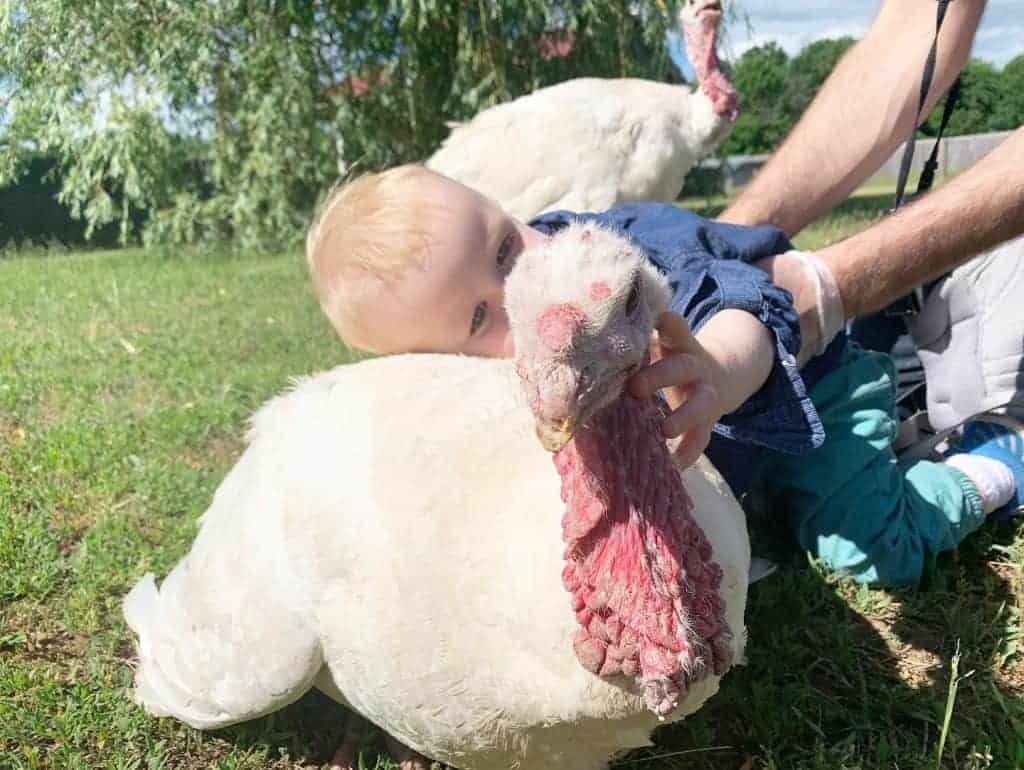
As with any challenging topic, it’s essential to be informed, sensitive, and careful when you’re communicating with youth about animal exploitation. Most notably, the discussions that sanctuaries have with children are going to differ depending on their age and cognitive development.
Children Under Age Six
Research around child development indicates that it’s never too early to start talking about speciesismA form of discrimination based on species membership; the belief that different species of animals deserve different ethical considerations regardless of whether they have similar needs or interests. and other forms of systemic oppression with children, especially since they are going to see it and hear it on a daily basis. Children under age six are beginning to develop their ability to empathize with others and are learning to understand that their actions impact others, including animals. However, it’s still challenging for them to understand perspectives outside of their own. One way to effectively counteract the speciesist messages they receive is by regularly exposing them to anti-speciesist messages that portray animals in a positive, life-affirming way. This is a good age to encourage dialogue around their own experiences and help them relate to animals in situations in which they would feel happy! For example, you can show them examples of animals that are happy and ask them, “How do you think it would feel to be that cowWhile "cow" can be defined to refer exclusively to female cattle, at The Open Sanctuary Project we refer to domesticated cattle of all ages and sexes as "cows." jumping in the air?” or “How do you think it would feel to be that pig snuggling with their family members in a bed of straw?”. You can also ask them how they think they would feel in situations that would make an animal sad: “How do you think you would feel if you were forced to stay still all day long?”. This is not an appropriate age, however, to talk about or show any sort of graphic animal cruelty (e.g., starvation, physical abuse, etc.), but you can introduce concepts like fairness and unfairness, as well as the fact that animals can be hurt and feel sad like humans: “Some people are unkind to animals because they have been taught that animals don’t have feelings. But we know animals have feelings just like us, so being unkind to them isn’t fair”. You can also explicitly point out examples of speciesism and ask them questions that encourage them to come to their own conclusions: “We treat some animals, like cats and dogs, very kindly. We give them names and take them to the vet when they’re sick. Other animals, like chickens and pigs, aren’t usually treated this way. What do you think about that?”. If they bring up an example of graphic animal cruelty because they have either already seen it or heard about it, you can ask them about it and see if it’s something that needs further discussion. Be honest, use concrete terms children this age will understand, and then move on.
Elementary Age
Children this age are rapidly developing their sense of identity, values, and beliefs about the world. As animal sanctuaries, it’s important to provide reliable information that will help them ethically consider the issues nonhuman animals face so they can make informed decisions about the foods they eat, the clothes they wear, and so on. Please be mindful, however, that children this age begin to form their earliest memories and are strongly affected by the images of the world they receive, so this is still not an appropriate time to show them any violent imagery. However, it is safe to introduce them to the issues farmed animalsA species or specific breed of animal that is raised by humans for the use of their bodies or what comes from their bodies. face in modern agriculture (e.g., where and how most of them live) and contrast those experiences with their actual needs, desires, thoughts and feelings without being too graphic. You can also talk about the history of eating animals and why it’s unnecessary for most people to do it, continuing the focus on moral concepts like fairness and unfairness. Point out examples of speciesism and ask them questions like, “Why is it unfair to treat animals unkindly?”. This is also an important age for building their sense of empowerment and ability to take positive action: “Some people are unkind to animals because they have been taught that they don’t have feelings. But we know animals have feelings just like us, so being unkind to them isn’t fair. When we see this happening, we can stand up for them if it is safe for us to do so and invite others to be kinder to animals”.
Tweens and Teens
At this age, kids are continuing to experiment with their identity. Although relationships with their peers are becoming more important, they are still heavily influenced by the adults in their lives, so it’s imperative that sanctuary educators model the language and behavior around nonhuman animals we’d like them to adopt. If you emphasize and show them that nonhuman animals are individuals with a life of their own, capable of unique sensations, feelings, and social interactions, you will help normalize this reality and enable kids to question and push back against the speciesist status quo more confidently.
Children this age also tend to have a lot more access to distressing information and violent imagery with or without parental consent because they can get a lot of it from online sources like social media and YouTube. Although it’s safe at this age to have more direct dialogue around animal exploitation, don’t assume that graphic depictions of animal cruelty are normal or always necessary. Just like with younger children, it’s important for the mental and physical health of kids this age to engage in dialogue around animal liberation through positive message strategies. This can also help strengthen their moral concern for animals.
Nonetheless, this is the time to engage youth in longer discussions about the history of animal exploitation and talk about how pervasive and problematic it is. For example, if you are explaining the context around a rescued pig resident at your sanctuary, you might say, “They suffered many kinds of physical and emotional abuse. Thankfully, they were rescued and brought here, which is an unlikely fate for most pigs.” Then you can go into detail about why and how abuse is permitted and even legally sanctioned with farmed animals like pigs. You can also give them tools to critically evaluate information around nonhuman animals and teach them to question speciesist claims and images by asking questions like, “Who made this?”, “Why did they make it?”, “Whose point of view is it from?”, “What information isn’t being included?”. If you decide to include imagery or content that explicitly depicts or describes animal suffering, make sure to provide warnings beforehand so that they can prepare themselves or ask to avoid certain content if needed. You could also consider providing or establishing a non-verbal signal that they can use if they are uncomfortable and need space.
Be sure to offer tweens and teens guidance on how to be effective allies for animals. Emphasize the role they have in taking action and equip them with well-researched resources that can provide a foundational understanding of animal oppression and liberation, as well as concrete examples of what they can effectively do.
Start with the Basics and Build Slowly

When it comes to tough topics like animal exploitation, regardless of age, we recommend starting with the basics. Ask yourself, “What foundational aspects of this issue do I feel are imperative for them to know and come away understanding?”. Some examples might include: a clear explanation of what exploitation is (e.g., prolonged unfair and unjust treatment towards specific groups of beings), a clear explanation of what animal exploitation is and is not (e.g., factory farming vs. indigenous hunting practices for sustenance), the fact that animal exploitation is a big issue that is entangled with a lot of other big issues, etc. Playing a vocabulary game or simply introducing fundamental vocabulary words are also great ways to introduce big topics. After you’ve introduced the issue, give the group the opportunity to engage and ask for more (or not). This allows you to gauge their comfortability and whether it’s appropriate to continue the conversation. Alternatively, you could let the kids take the lead by starting the conversation with questions about what they do and do not know. This will give you an idea of what they still need (or do not need) to learn.
Unpack the History Behind Animal Exploitation and Work from an Understanding of Interconnectedness

Once you’ve gone through the basics, you might consider unpacking some of the history behind animal oppression by saying something as simple as, “This is not a new issue. Rather, it’s an ongoing problem entangled with other ongoing problems that have lasted for hundreds of years! And it’s going to take all of us to make positive change and work towards a better future.” It can also be helpful to physically show children how big of a problem it is by taking out some string and having one of them wind and tie their hand up. You can talk about how animal oppression and speciesism have been building for a long time, making it really layered, just like the tangled string. Remind them that it will take a long time to untangle the string, just like it will take a long time to untangle speciesism.
You might consider going a little further by sharing a story about how some form of systemic oppression has personally affected you or by sharing a short read-aloud story about animal oppression like Sprig the Rescue Pig or Gwen the Rescue Hen by Leslie Crawford. Ask the kids how it made them feel. Perhaps they’ll feel inclined to share a difficult experience of their own. With younger kids, the point is not to conduct an in-depth analysis of animal exploitation and other forms of oppression, but to gently explore examples of them. With older children, you can dive even further into the entanglement of animal exploitation and other forms of oppression by reading graphic novels together like The Leak by Kate Reed Petty and Andrea Bell. The Leak is a story inspired by real events that highlights the links between environmental destruction, and the consequent harmThe infliction of mental, emotional, and/or physical pain, suffering, or loss. Harm can occur intentionally or unintentionally and directly or indirectly. Someone can intentionally cause direct harm (e.g., punitively cutting a sheep's skin while shearing them) or unintentionally cause direct harm (e.g., your hand slips while shearing a sheep, causing an accidental wound on their skin). Likewise, someone can intentionally cause indirect harm (e.g., selling socks made from a sanctuary resident's wool and encouraging folks who purchase them to buy more products made from the wool of farmed sheep) or unintentionally cause indirect harm (e.g., selling socks made from a sanctuary resident's wool, which inadvertently perpetuates the idea that it is ok to commodify sheep for their wool). to marginalized groups of beings. Regardless of which stories you choose to share, be sure they examine the connections between various forms of violence and encourage their readers to examine what their role in the story is and whether it has resulted in their privilege or been used against them. Storytelling is a great tool for helping others recognize that unjust treatment is often a symptom of larger institutions valuing some beings more than others. For a shorter-term program, you could simply hang up a big poster on the wall and write “factory farmAn intensive agricultural operation that prioritizes large volume animal product production using strict production methods, typically away from the public eye.” in the middle. Then, engage the kids in a discussion and documentation of all the negative effects that result from it (e.g., animal exploitation, human exploitation, biocide, ecocide, and so on).
While it’s important to examine the interconnections between animal exploitation and other forms of oppression, it’s equally, if not more important to help kids examine the interconnections between humans and nonhumans on a social emotional level. One way to do this in a sanctuary setting is to provide the kids with space and time to sit and document their observations of and perhaps interactions with certain sanctuary residents. Ask them to highlight examples they witness of their socially and emotionally complex lives. For example, what do they think the residents are thinking, feeling, doing, and communicating? Then, encourage the kids to share their thoughts. Group discussions can provide a space to celebrate, acknowledge, and explore the complex lives of nonhuman animals, the similarities and differences between humans and nonhumans, the challenges of behavioral interpretation and the ethical implications of doing so, the relational dynamics between humans and nonhumans, as well as alternative and potentially less harmful ways of being in relationship with them. Experiences like these help them call into question the dominant “us vs. them” and “human vs. nonhuman” divide.
Be Honest and Accountable

As long as the conversations are developmentally appropriate, have confidence in yourself and the kids who visit that you can (and should) talk openly about animal oppression in a sanctuary setting. When kids ask challenging questions, give honest answers. There may be a few questions you don’t have an answer for or aren’t sure how to respond to, and that’s okay! If time permits, you can research those questions together or you can encourage the kids to research them on their own. It’s also important to be honest and accountable to your own indirect or direct role in animal oppression, especially with children. If your behavior or words to others is antithetical to what you’re telling them, they will notice. It’s equally important to remind children that we are all on our own journeys trying our best to do better. Every person’s position in society informs their experiences, capabilities, and limitations. As long as you’re honest and showing the kids that you are trying despite the current oppressive structures and systems we’re forced to live in, you can help them learn how to navigate a very complex world.
Understand the Power of Language

Model Your Sanctuary’s Message Through Anti-Oppressive Language
Avoid arbitrarily using harmful metaphors that compare examples of human suffering to examples of animal suffering. Be mindful that these forms of suffering are unique to specific groups of beings and equating them together to evoke an emotional reaction is traumatic for many folks. If you’d like to critically examine how various forms of suffering are connected, consider looking into and sharing the work of scholar-activists like Aph Ko, Maneesha Deckha, and Kimberlé Crenshaw.
Draw Attention to the Ways that Stereotypes and Words Shape Our Understanding of and Experiences with Animals
Deep-seated stereotypes and attitudes about particular nonhuman animals are ingrained in and perpetuated through language. While some of them are seemingly harmless (e.g., “busy beaver”, “cool cat”), others are wildly inaccurate and have direct ethical implications for these animals in the form of intolerance, objectification, and violence (e.g., “greedy pig”, “bird brain”). One way to push back against these stereotypes is by helping kids question the grounds for belief in them. You could do this by distributing a list of statements which kids evaluate as either true or false and include fallacies such as, pigs are dirty; turkeysUnless explicitly mentioned, we are referring to domesticated turkey breeds, not wild turkeys, who may have unique needs not covered by this resource. are unintelligent; cows’ udders would explode if they weren’t “milked” by humans; and roosters are mean.
Alternatively, you could investigate how certain words imply particular perceptions of animals in an activity called “Animal Adjectives”, where kids are asked to list words that they associate with particular animals and then mark them with a plus or minus sign to indicate positive or negative connotations. Some animals could be associated with both positive and negative meanings. You can ask the kids to clarify their understandings of these animals and how their associations might have a harmful impact on how they are treated by humans. This exercise can help learners discover that their opinions and representations of certain animals are often inconsistent with reality, especially when it’s facilitated in a sanctuary setting that offers direct experience and interaction with these animals.
Limit Exposure to Violent or Upsetting Imagery

As we mentioned in the section above on Developmentally Appropriate Dialogue, it’s important to limit depictions of violence towards animals. Research on child development indicates that young children should not be exposed to any violent imagery, while tweens and teens should be limited. There are several reasons for this:
- Children are deeply affected by graphic imagery and can experience lingering feelings of grief, trauma, fear, and other mental health concerns.
- Disturbing imagery can result in guilt, denial, powerless-ness, and/or inaction.
- Repetitive frightening images can desensitize children to violence.
- Regardless of age, it’s essential to be mindful of any children with traumatic histories and experiences and exclude information or imagery that may re-traumatize them.
Combine Representations of Nonhuman Animal Suffering with Representations of Their Lives Outside of Suffering
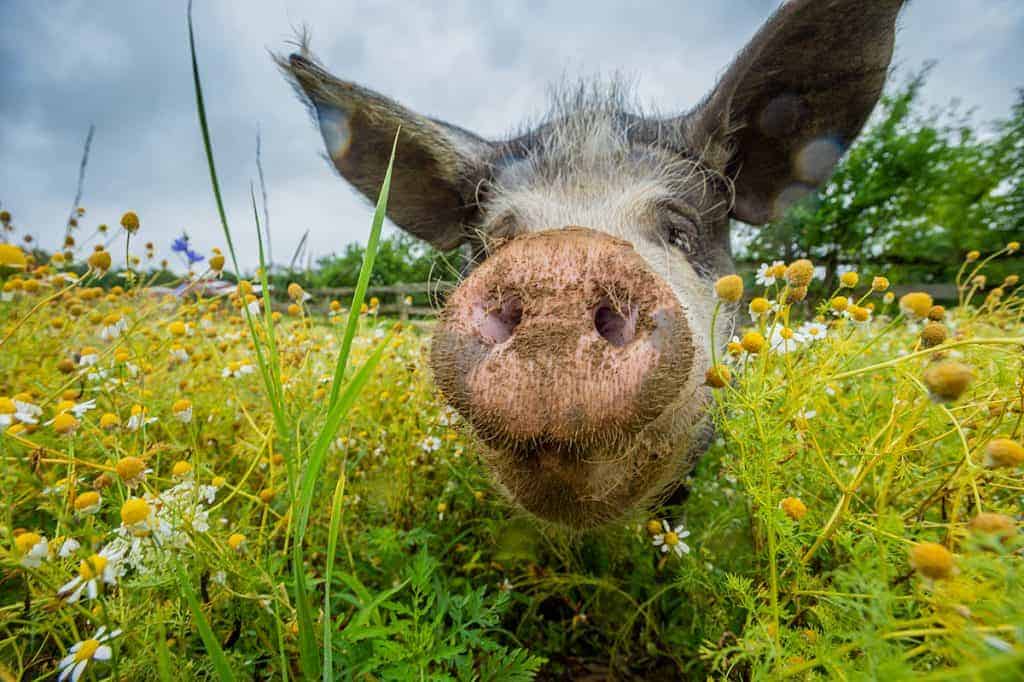
If you decide to incorporate representations of nonhuman animal suffering in your educational programming, be sure to also include representations of nonhuman animals living their lives beyond suffering. Lauren Corman, an Associate Professor of Sociology and Critical Animal Studies at Brock University, talks in detail about this beyond-suffering approach in an article titled “Ideological Monkey Wrenching: Nonhuman Animal Politics Beyond Suffering:
“This beyond suffering approach strongly resonates with other social justice movements that have long resisted both the homogenization and the reductionism of various subjects to pure victims. These movements, which have fought hard against dehumanization, recognize that objectification manifests as denial of full or even partial subjectivity and thus exclusion from our circles of concern and compassion. Suffering is an inevitable part of the conversation around animal industries, as well as around disability within these industries and for good reason. However, animals are too often presented simply as voiceless beings who suffer. Pairing such research with representations of suffering deepens the sense of what is lost when other animals are harmed”.
With this understanding in mind, sanctuary educators have a wonderful opportunity to convey farmed animals as agential subjects with complex inner worlds and subjective experiences. Kids can experience this through direct observation of sanctuary residents and testimony from sanctuary staff, volunteers, or anyone else who can offer important insight into their complex social emotional lives. You might also have kids compare the lives of animals on farmsFor-profit organizations focused on the production and sale of plant and/or animal products. with the lives of the sanctuary residents by facilitating a true/false quiz. It might include false statements like, “Animals on farms live on pastures with lots of room to roam around”. This is a helpful exercise that allows kids to gain a better understanding of farmed animals and the cruelties of farming without being overly graphic.
Foster Empathy
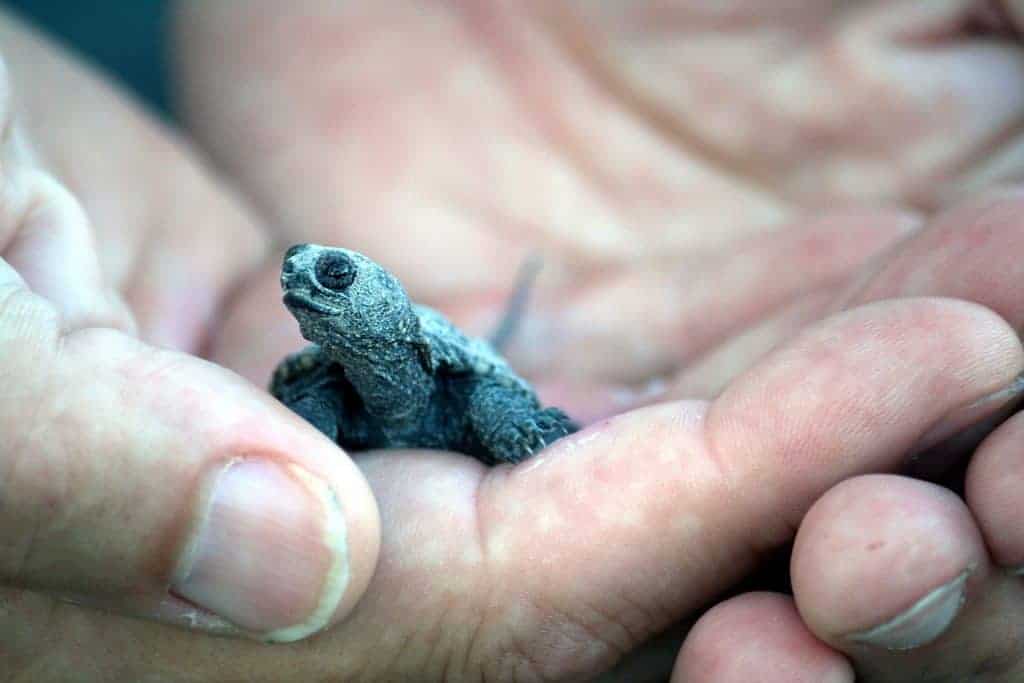
We have an entire resource on fostering empathy towards farmed animals that is chock-full of information on what empathy is (and isn’t), why it matters, how it develops, as well as some of the contributing factors and barriers to it. Here are some additional thoughts and ideas for helping children develop their ability to empathize with exploited animals.
Although humans are genetically inclined to develop empathy, it’s a skill that must be practiced. A lot of times, children don’t understand that some things are harmful for animals, so part of our responsibility as sanctuary educators is to help them think more critically about what animals might be going through in certain circumstances. For example, if you show kids an image of a female pig lying inside a farrowing crate, you can have them consider questions like these:
- “Where do you think that pig came from? How did she get there? Where is this pig’s family?” This could be an entry point to talk about issues with industrial breeding practices and reproductive (in)justice in modern farming.
- “Do you think this could be harmful physically and emotionally?” This can get kids thinking about how socially and emotionally complex pigs are and the inability for them to express themselves in these ways inside a farrowing crate.
- “Imagine if you were adopted by a family of pigs. Could your adopted family of pigs give you everything you need?” This helps kids put themselves in the pig’s position and think about what they might be missing by not living in a more suitable habitat like a sanctuary with companions of their own species.
- “Would your cat or dog enjoy being kept inside a farrowing crate all day everyday?”
Normalize and Validate Challenging Feelings

When it comes to talking about animal exploitation with children, it’s okay for you to show emotion. These can be very emotionally charged conversations, particularly with sanctuary folks who work directly with rescued animals. Allowing children to see your emotional response normalizes and validates understandable feelings of sadness, anger, confusion, guilt, and fear. If you are telling a challenging story of one of your sanctuary’s residents, you might explicitly say, “I feel sad and I feel angry that this happened and continues to happen to these animals”. Sharing your own feelings can also offer kids a sense of relief and even hope, as they are getting the opportunity to be in conversation with someone who has grappled with the same information and moved forward with a positive, actionable response. Kids don’t always know how to talk about or process their emotions, so it’s important that you ask them questions and allow them time to reflect and share their feelings, too. You might say something like, “When I first learned about this, I felt pretty sad and angry. How do you feel after learning about that?”. You might also consider asking kids to write down how they feel in some sort of journal reflection and then allow them time to voluntarily share their thoughts out loud.
Utilize Humor (Appropriately)

Some educators have found graphic novels and comics like The Far Side and Calvin and Hobbes helpful in unpacking tough topics like speciesism and anthropocentrismAnthropocentrism is the belief that human beings are the most important entity in the world. Anthropocentrism interprets or regards the world in terms of human values and experiences. with kids. Utilizing the humor in resources like these can offer a less distressing way to generate discussion around animal oppression and illuminate its interconnections with other systemic issues because they frequently reverse the roles of humans and animals.
Be Gentle: Learning is a Process

Model respectful dialogue when you’re working with children and be sensitive to diverse opinions, experiences, and feelings. Sharing your own learning/unlearning journey can help acknowledge where your audience is coming from and gently guide them in a more positive direction. The goal of sanctuary educational programming should be to inspire positive change by drawing on compassion, not guilt.
Talk About Hope and Provide Role Models
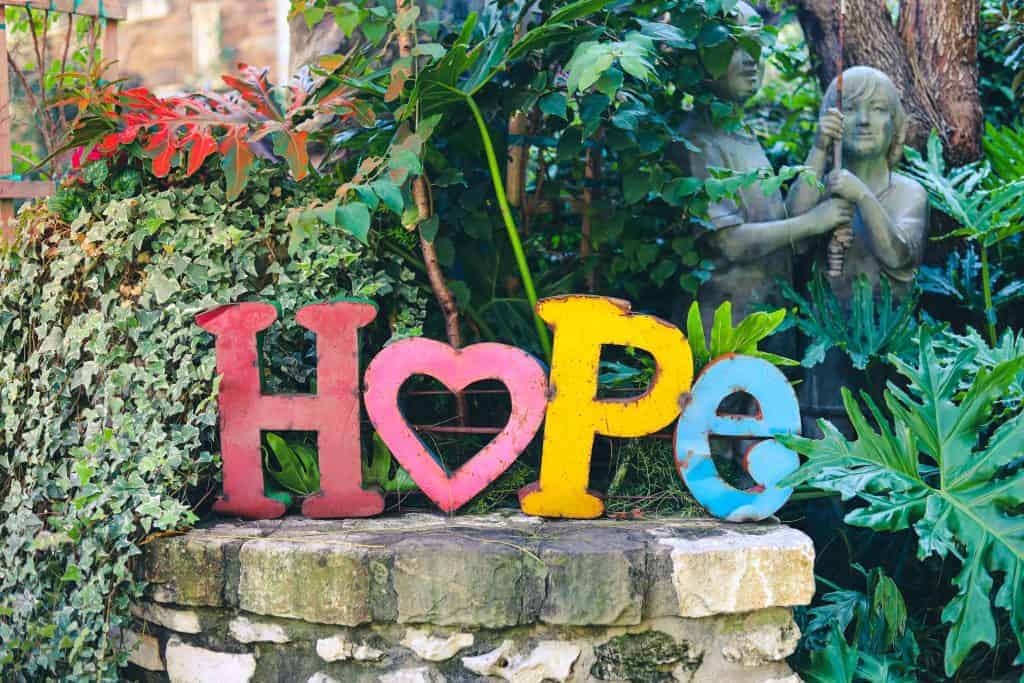
Let kids know that animal exploitation is something that we all advertently or inadvertently contribute to, but it’s also something we can overcome together! Empower them by giving them meaningful ways to contribute to animal liberationA social movement dedicated to the freeing of nonhuman animals from exploitation and harm caused by humans.:
- Have conversations about standing up for animals. You can read books that have hopeful endings like Vivi the Supervegan by Tina Newman and ask the kids to write down or draw what they would do if they saw or heard about an animal being mistreated. The goal is to help them feel empowered enough to say, “This is wrong. I need to stand up for this animal. I need to help make positive change.”
- Help them filter out problematic social media content that reinforces harmful assumptions about animals (e.g., content that normalizes wild animals as props and erases their agency – riding elephants and hugging sloths on vacation, wrestling adult tigers, etc.). Then help them replace that content with animal-friendly educational content like animal ethologists, ecologists, activists, wildlife biologists, responsible sanctuaries and animal rescueAn organization that helps secure animals from dangerous or unacceptable situations. As organizations, rescues may or may not have dedicated permanent infrastructure for housing animals. organizations, etc. Helping them curate their social media platforms to be more animal-friendly can empower kids to take actionable steps to help protect animals. It might even inspire them to create and share their own educational content and videos on issues facing animals.
- Encourage kids to imagine a world without animal exploitation, and then to think of ways to move towards that vision. Sanctuaries can be wonderful settings for children to imagine an alternative world. Allow them plenty of time to indulge in the wonder, beauty, and joy of farmed animals through direction observation and/or safe interaction with some of your residents.
Diversify Your Learning Tools and Resources

The sky is the limit! Consider using books, magazines, podcasts, pictures, documentaries, art, comic strips, graphic novels, blogs, statistics, and other non-traditional academic sources that feature life-affirming representations of nonhuman animals, as well as stories of their resilience, compassion, and love.
Prepare and Practice

Conversations about animal exploitation can be very challenging, especially with children. Consider having these conversations with another adult first to practice becoming comfortable with what you want to say. You can imagine questions they might ask and prepare adaptable answers beforehand. While a single visit to an animal sanctuary might not change the entire world, a meaningful experience can be incredibly transformative for the kids who visit, so make it count. You got this!
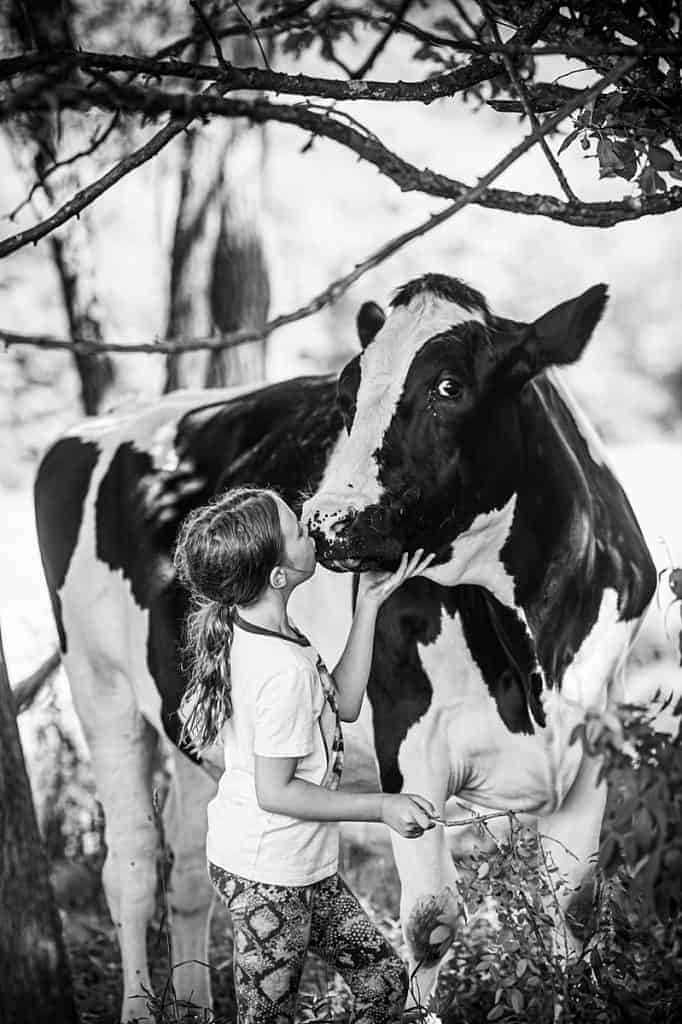
Sources
Earthkind: A Teacher’s Handbook on Humane Education | David Selby
15 Tips for Talking with Children about Violence | Lydia Breiseth, Colorín Colorado
Helping Kids Deal with Animal Exploitation on Social Media | National Geographic
How to Talk to Kids about Violence | Child Development Institute
How to Talk to Kids about Violence, Crime, and War | Caroline Knorr, Common Sense Media
Ideological Monkey Wrenching: Nonhuman Animal Politics Beyond Suffering | Lauren Corman
Teaching about Farmed Animals in Elementary School | HEART
Teaching for a Tolerant World, Grades K-6: Essays and Resources | Judith P. Robertson, Editor








